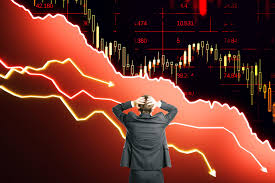For decades, the phrase “buy the dip, sell the high” has served as a rallying cry for opportunistic investors. It’s simple, intuitive, and rooted in market history. When prices drop, buy. When they soar, sell. But as global markets in 2025 present a more complex backdrop—marked by persistent inflation, geopolitical uncertainty, and shifting monetary policies—many investors are asking: does this time-tested advice still hold up?
A Market Under Pressure
So far this year, equity markets have been on a rollercoaster. After a strong start to 2025, April has brought renewed turbulence. The S&P 500 has declined by over 5% from its recent highs, while Europe’s STOXX 600 is off by nearly 4%, and Asian equities have similarly faltered. The Nasdaq, particularly vulnerable to interest rate expectations, has seen even sharper drops amid concerns that the Federal Reserve will delay its long-awaited rate cuts.
The cause? A stubbornly high inflation rate—U.S. CPI rose 3.6% year-over-year in March—has prompted central banks to hold steady or even hint at future hikes, rather than easing as many had hoped. At the same time, geopolitical frictions are resurfacing. U.S.-China trade tensions, oil supply concerns, and the reemergence of tariffs as a political tool have made investors nervous. Volatility has spiked, and cash is once again flowing into perceived safe havens like gold and U.S. Treasuries.
With sentiment turning more cautious, the idea of “buying the dip” becomes both appealing and risky.
Does “Buy the Dip” Still Make Sense?
Historically, buying into market pullbacks has delivered solid returns for patient investors. Following the COVID-19 crash in March 2020, for instance, those who bought the dip were rewarded with a 70% rally in the S&P 500 over the next 18 months. Similarly, pullbacks during the Eurozone crisis and the 2008 financial crisis eventually led to strong rebounds—if one had the time and discipline to wait.
But the current environment is different. We’re not emerging from a one-time shock or crisis. Instead, we’re facing a prolonged and nuanced adjustment: inflation that refuses to normalize quickly, monetary tightening that hasn’t fully reversed, and geopolitical risk that is more structural than cyclical.
This doesn’t mean “buying the dip” is obsolete—it means it needs refinement.
Being Strategic, Not Reactive
Rather than blindly deploying capital at every market downturn, investors in 2025 need to ask deeper questions: Is this dip driven by short-term noise or a fundamental change in macroeconomic conditions? Are valuations genuinely attractive relative to earnings and growth expectations? Are we in a true correction or the early phase of a bear market?
Current valuations offer some food for thought. The S&P 500’s forward P/E ratio, which climbed to 21 earlier this year, has dropped back toward 19—still elevated by historical standards, but less stretched. Tech giants have seen steeper discounts, yet many still trade well above their pre-pandemic multiples. For long-term investors with a diversified approach, selectively adding to positions in high-quality, cash-generative companies might make sense, particularly in sectors like healthcare, infrastructure, or energy.
But deploying capital into speculative or overhyped growth names purely because they’re “down 20%” from recent highs may not yield the results many hope for—especially in a market that is repricing risk and rethinking valuations.
Timing the Market vs. Time in the Market
One of the dangers of over-relying on “buy the dip” is that it can evolve into market timing—an exercise that has consistently proven difficult even for professionals. Studies show that missing just the 10 best days in the market over a 20-year period can reduce total returns by more than 40%. Ironically, some of those best days often follow closely on the heels of the worst ones.
So, rather than trying to catch the exact bottom, a better strategy for most retail investors might involve dollar-cost averaging—gradually buying into the market over time, regardless of daily fluctuations. This approach reduces the risk of investing all at once during a false bottom and allows investors to stay engaged without needing perfect timing.
A Smarter Way to Approach Dips in 2025
In today’s climate, “buying the dip” shouldn’t be discarded—but it shouldn’t be romanticized either. It’s not a magic formula, but a potential entry point that works best when paired with discipline, analysis, and a long-term view.
With inflation lingering, central banks still cautious, and geopolitical risk firmly in play, the dips we’re seeing may last longer and cut deeper than many investors are used to. But history suggests that those who remain calm, do their homework, and focus on fundamentals—not fear—often come out stronger in the end.
So if you’re wondering whether now is the time to “buy the dip,” the answer is: possibly, but only with a clear strategy, diversified portfolio, and realistic expectations. Markets may be turbulent—but opportunity still lives in volatility, for those prepared to navigate it wisely.

